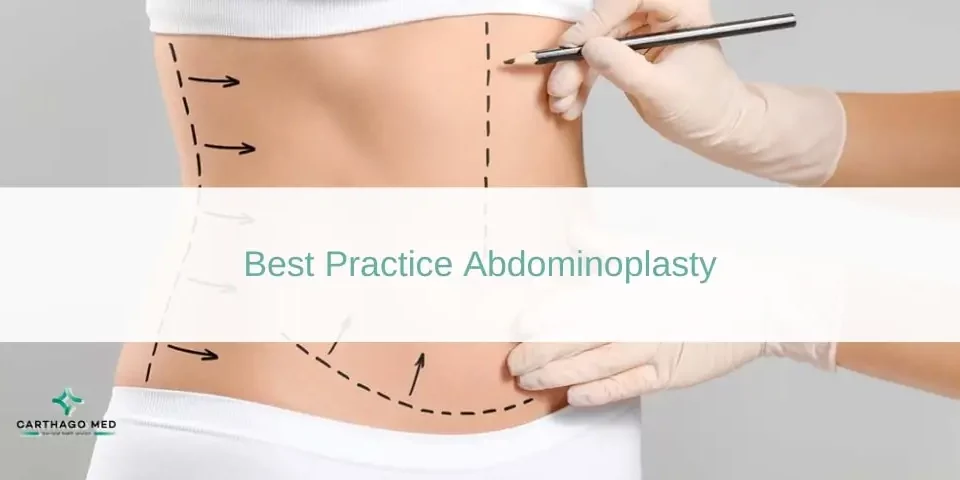
A flat abdomen thanks to cosmetic surgery: what are the options?
Getting a flat abdomen, which results in a thinner silhouette is one of the aesthetic goals of any person suffering from excess tummy fat. Due to aging or lack of physical activity, skin abdomen loosens and fat starts accumulating in the abdominal area. If your abdomen fat resists to both physical activity and a healthy lifestyle, then the only solution to get rid of it is through cosmetic surgery: abdominoplasty. An abdominoplasty will remove stubborn fat pockets as well as excess skin in the abdominal area. What are the techniques used in cosmetic surgery to obtain a flat abdomen and who are the good candidates for this procedure?
Can liposuction flatten the abdomen by removing fat between the skin and muscles?
Liposuction is one of the most requested and performed surgical procedures worldwide. Liposuction is most effective for individuals who are at or near their ideal body weight but have localized pockets of stubborn fat. It is not a solution for overall weight loss. The procedure uses a suction technique to remove fat from specific areas of the body such as the abdomen, hips, thighs, buttocks, arms or neck. Excess fat removal through liposuction involves the use of specialized instruments to suction out fat cells from specific areas. While liposuction primarily addresses fat, it can indirectly enhance the appearance of muscle definition. By removing excess fat, the underlying musculature may become more visible and defined. Regardless of the treatment area, results are visible after few weeks: the skin is toned and the treated area is rendered more refined and good-looking. Liposuction is the easiest cosmetic surgery to achieve a flat abdomen: the principle of the procedure is to suction fat located in between the skin and abdominal muscles. If skin slackening is moderate, then abdomen skin may be able to retract after the procedure.
It's important to note that while liposuction is effective in addressing excess fat, it may not be the optimal solution for all abdominal concerns. For individuals dealing with issues like loose skin or abdominal muscle laxity, additional procedures like abdominoplasty may be recommended for a more comprehensive result. However, it's crucial for individuals considering liposuction to have realistic expectations. While the procedure can certainly improve the contour and flatten the abdomen, it is not a substitute for maintaining a healthy weight, adopting healthy eating habits, and incorporating regular exercise habits. Bruising and swelling are common after liposuction and are part of the normal healing process. The extent and duration of bruising and swelling can vary among individuals. Following liposuction, patients are typically advised to wear compression garments can help manage these side effects. Recovery times can vary, but many people can return to light activities within a few days to a week after liposuction. Strenuous exercise and more demanding activities may need to be postponed for a few weeks to allow for proper healing. Adhering to postoperative care instructions, including any prescribed medications and follow-up appointments, is essential for a smooth recovery. While liposuction is generally considered safe, like any surgical procedure, it carries some risks. Complications may include infection, changes in sensation, contour irregularities, or fluid accumulation. It's important to thoroughly discuss potential risks and benefits with your surgeon before deciding to undergo the procedure. In addition to traditional liposuction, there are non-invasive or minimally invasive alternatives like laser liposuction, ultrasound-assisted liposuction, and cryolipolysis (CoolSculpting). These procedures may have different mechanisms but aim to achieve fat reduction without the need for surgery.
Liposuction is a powerful tool for flattening the abdomen by precisely targeting and removing excess fat between the skin and muscles. Plastic Surgery Specialists of Boca Raton, with their expertise under Dr. Rafael C. Cabrera, offers a personalized approach to liposuction, ensuring optimal results for individuals seeking a sculpted and toned abdominal appearance.

Is Abdominoplasty the Right Choice for Achieving a Flatter Stomach?
Abdominoplasty, commonly known as tummy tuck, is a surgical procedure that removes excess fat and restores muscles in the abdominal region to create a flatter and tighter abdominal profile. If the patient suffers from excess skin, then a liposuction would not suffice: besides having recourse to liposuction, a tummy tuck is also needed to sculpt a firmer stomach (the skin between the umbilicus and the public area). Before deciding to undergo abdominoplasty, it is crucial to consider various factors. Firstly, age-related changes play a significant role, and understanding how age influences the effectiveness of the procedure is essential. Additionally, stabilizing weight before surgery is vital for achieving optimal results, as weight fluctuations can affect the overall outcome. Moreover, emphasizing healthy lifestyle habits is key, including maintaining a healthy weight, adopting proper eating habits, and incorporating regular exercise routines for overall well-being.
Mini tummy tuck and full abdominoplasty are two primary variations of this procedure, each tailored to address specific concerns. A mini tummy tuck is suitable for individuals with localized issues, such as excess fat or skin in the lower abdominal region. On the other hand, a full abdominoplasty is a more extensive procedure, addressing a broader range of concerns, including navel repositioning, excess skin and fat removal, and abdominal muscle repair. Abdominoplasty is a more complete and heavier procedure than liposuction. If post-surgical scarring is minor for a liposuction, abdominoplasty leaves heavier marks (the incision is generally performed around the pubic area). The results of abdominoplasty are often long-lasting, provided that patients maintain a healthy weight and adopt healthy eating habits. This emphasizes the importance of a post-surgery lifestyle that complements the aesthetic improvements achieved through the procedure. A patient who wishes to undergo an abdominoplasty, may be subject to severe complications after the surgery. Regardless, the surgeon will make sure to conduct a thorough diagnosis of the patient’s general health status before the surgery. These include blood examinations and other examinations related to abdominal skin quality.
Abdominoplasty, performed by specialists like Dr. Cabrera, proves to be a highly effective and comprehensive choice for achieving a flatter stomach. With its ability to address both excess fat and skin laxity, this surgical procedure offers long-lasting results, empowering individuals to enjoy a more sculpted and toned abdominal appearance.









